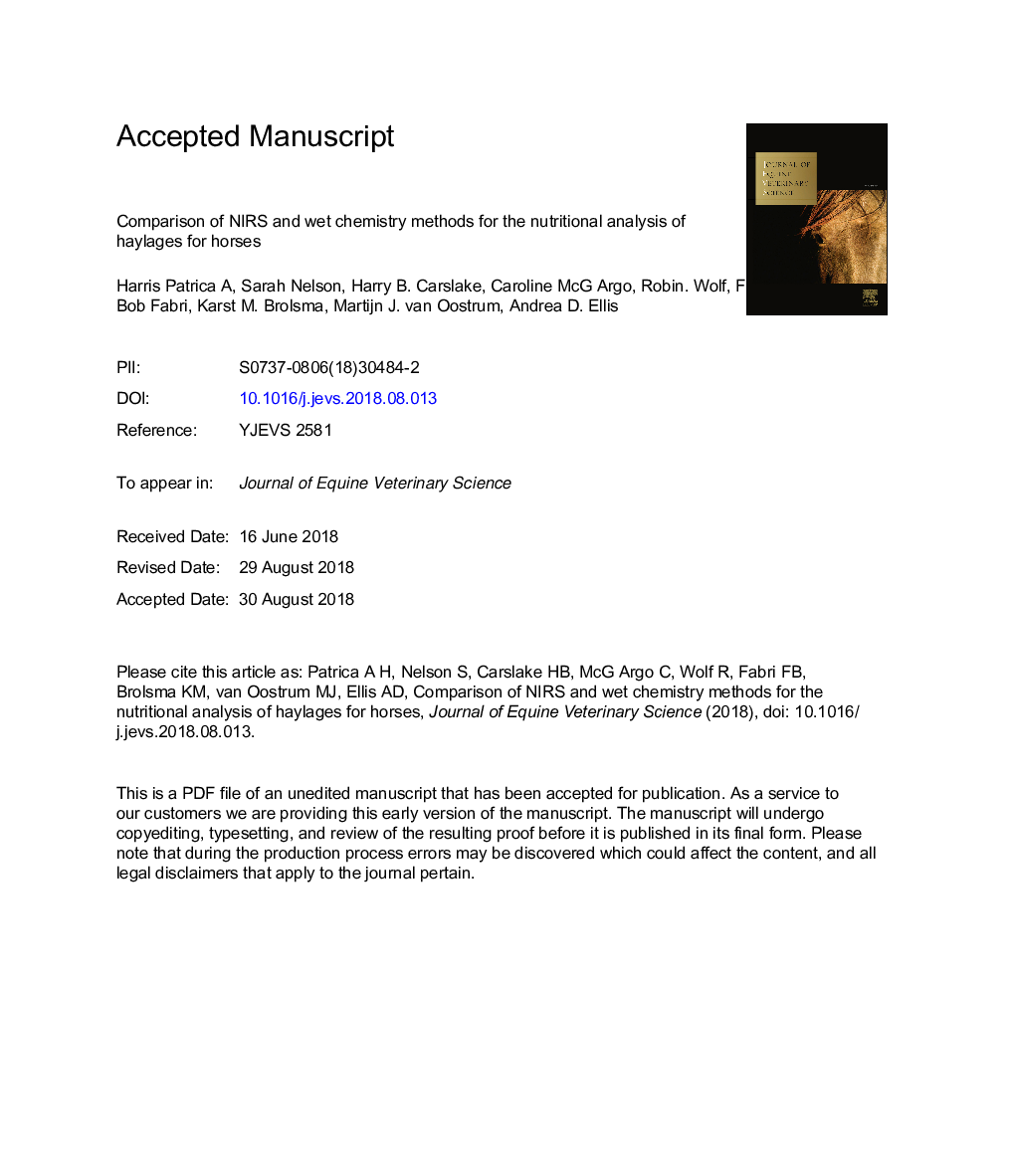| کد مقاله | کد نشریه | سال انتشار | مقاله انگلیسی | نسخه تمام متن |
|---|---|---|---|---|
| 11019456 | 1718105 | 2018 | 25 صفحه PDF | دانلود رایگان |
عنوان انگلیسی مقاله ISI
Comparison of NIRS and Wet Chemistry Methods for the Nutritional Analysis of Haylages for Horses
دانلود مقاله + سفارش ترجمه
دانلود مقاله ISI انگلیسی
رایگان برای ایرانیان
موضوعات مرتبط
علوم زیستی و بیوفناوری
علوم کشاورزی و بیولوژیک
علوم دامی و جانورشناسی
پیش نمایش صفحه اول مقاله

چکیده انگلیسی
Haylage (dry matter 51%-85%) is one of the most common forages fed to equids in Europe. The aim of this study was to assess the repeatability and reliability of the nutrient concentrations in haylage determined by either near-infrared spectroscopy (NIRS) or traditional Wet chemistry (WCh) methods in a single commercial laboratory. To assess this within methods, one single representative sample from one bale of haylage was split into 10 separate samples for analysis by both methods. A further 25 separate haylage bales from across the UK were subsampled at source (blind), and some further divided at the laboratory. In total, 52 haylage subsamples were analyzed using both NIRS and WCh, to measure organic matter, crude protein, ammonia (n = 34), crude fiber and fat (n = 45), acid detergent fiber, neutral detergent fiber, acid detergent lignin, and sugar content (g/kg dry matter). For the subsamples from one single sample (n = 10), apart from ammonia and sugar, the coefficient of variance (%cv) within each method was very low showing good reliability (mean %cv ± standard deviation: NIRS 3.4 ± 2.1; WCh 3.6 ± 2). Mean %cv was 15.4% versus 15.0% for sugar and 29% versus 4.6% for ammonia for NIRS and WCh, respectively. Between the WCh and NIRS methods, the analytical value for sugar could vary by up to 20%. Overall, there was a strong correlation between the analytical methods for all measures (R2 = 0.80-0.91, P < .001, Pearson correlation), with the weakest correlation being for fat and ammonia. The wide range of measures for what was designated as sugar in samples from the same original bale, regardless of the method used, requires further investigation.
ناشر
Database: Elsevier - ScienceDirect (ساینس دایرکت)
Journal: Journal of Equine Veterinary Science - Volume 71, December 2018, Pages 13-20
Journal: Journal of Equine Veterinary Science - Volume 71, December 2018, Pages 13-20
نویسندگان
Patrica A. Harris, Sarah Nelson, Harry B. Carslake, Caroline McG. Argo, Robin Wolf, F. Bob Fabri, Karst M. Brolsma, Martijn J. van Oostrum, Andrea D. Ellis,